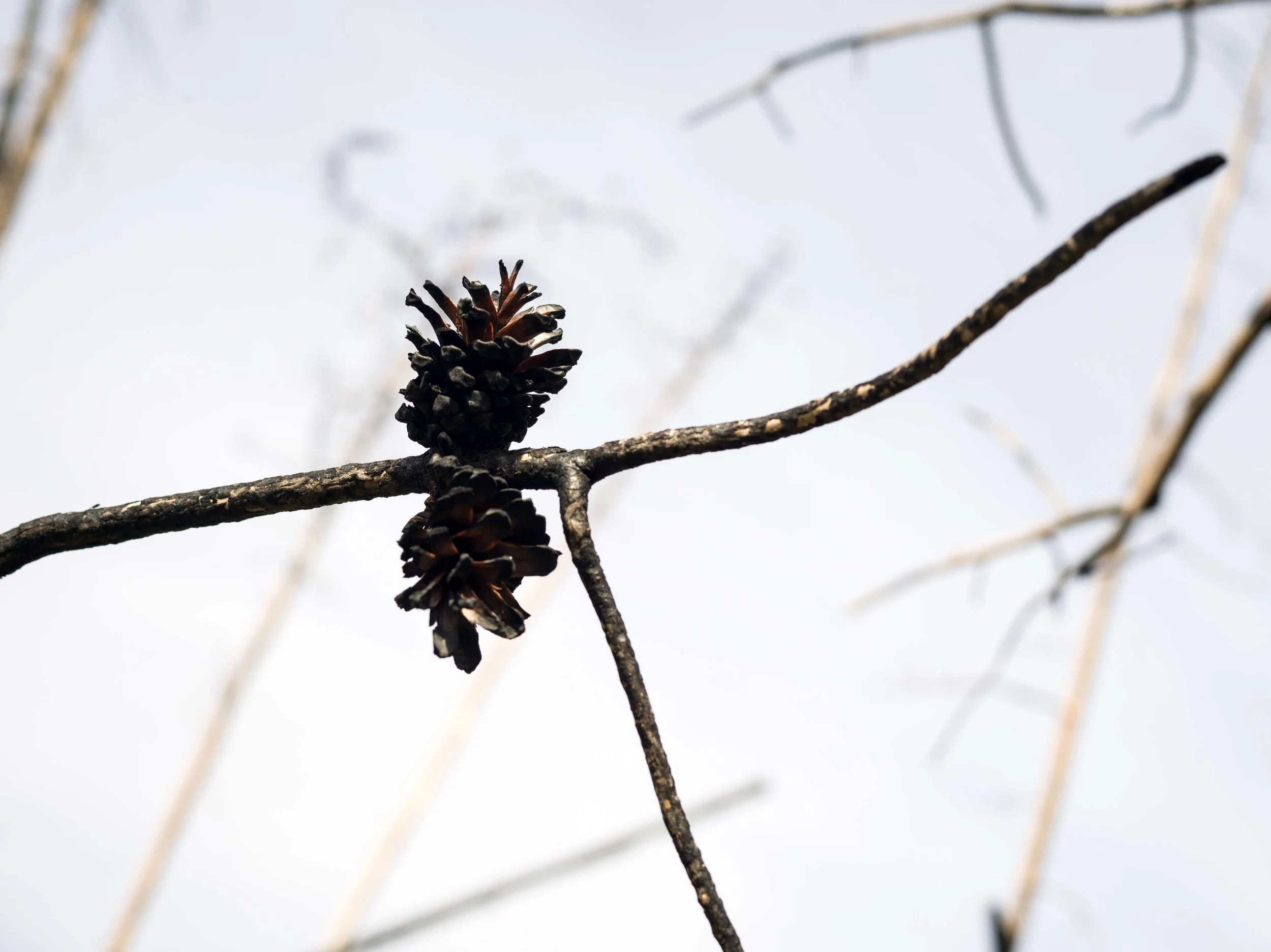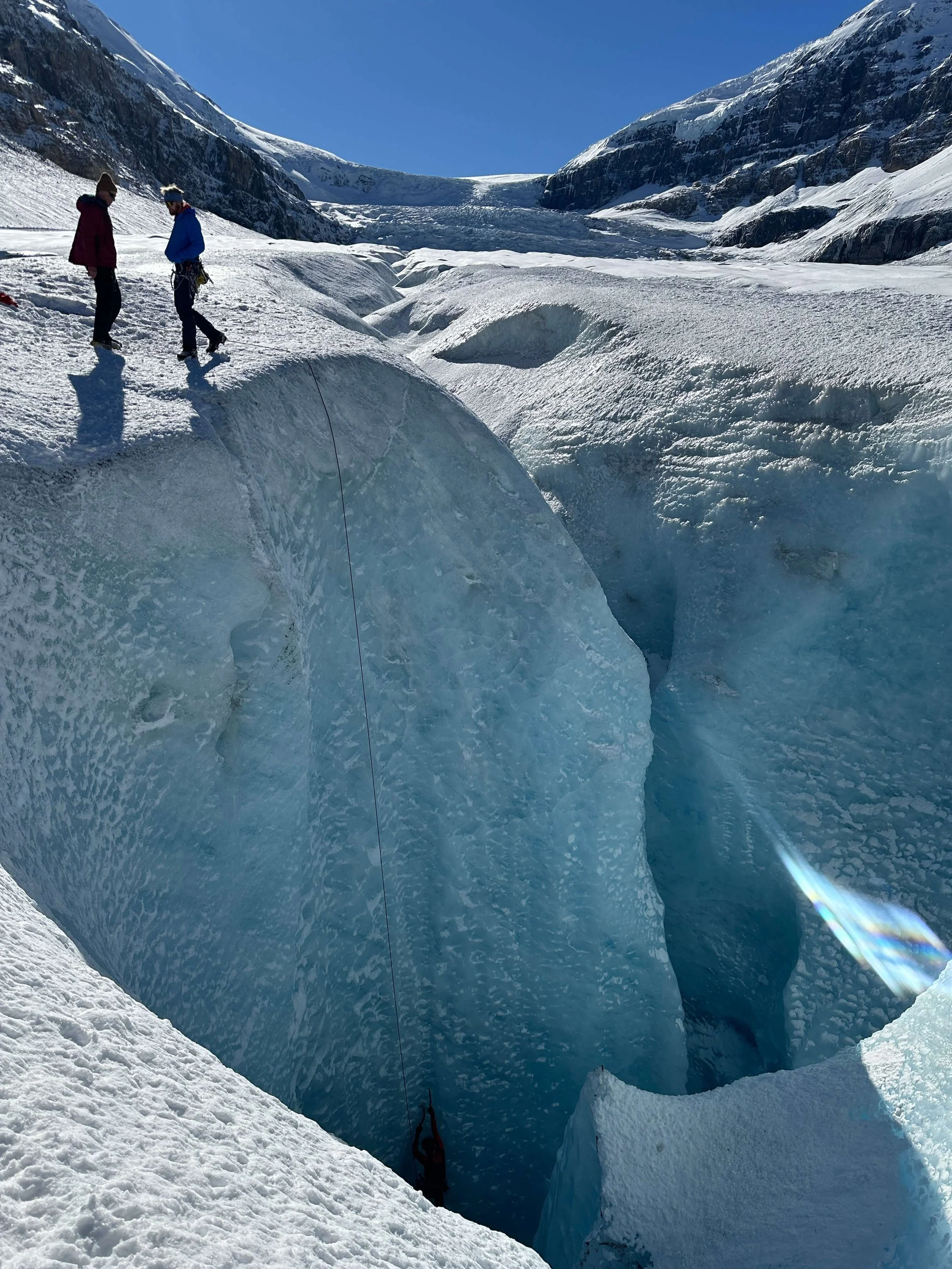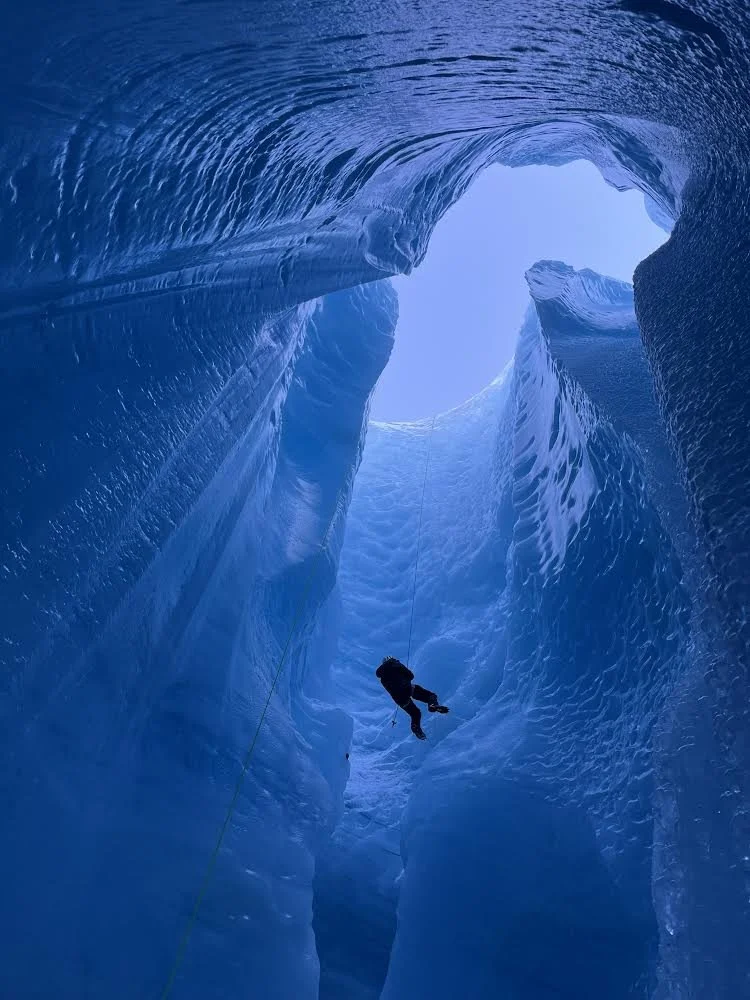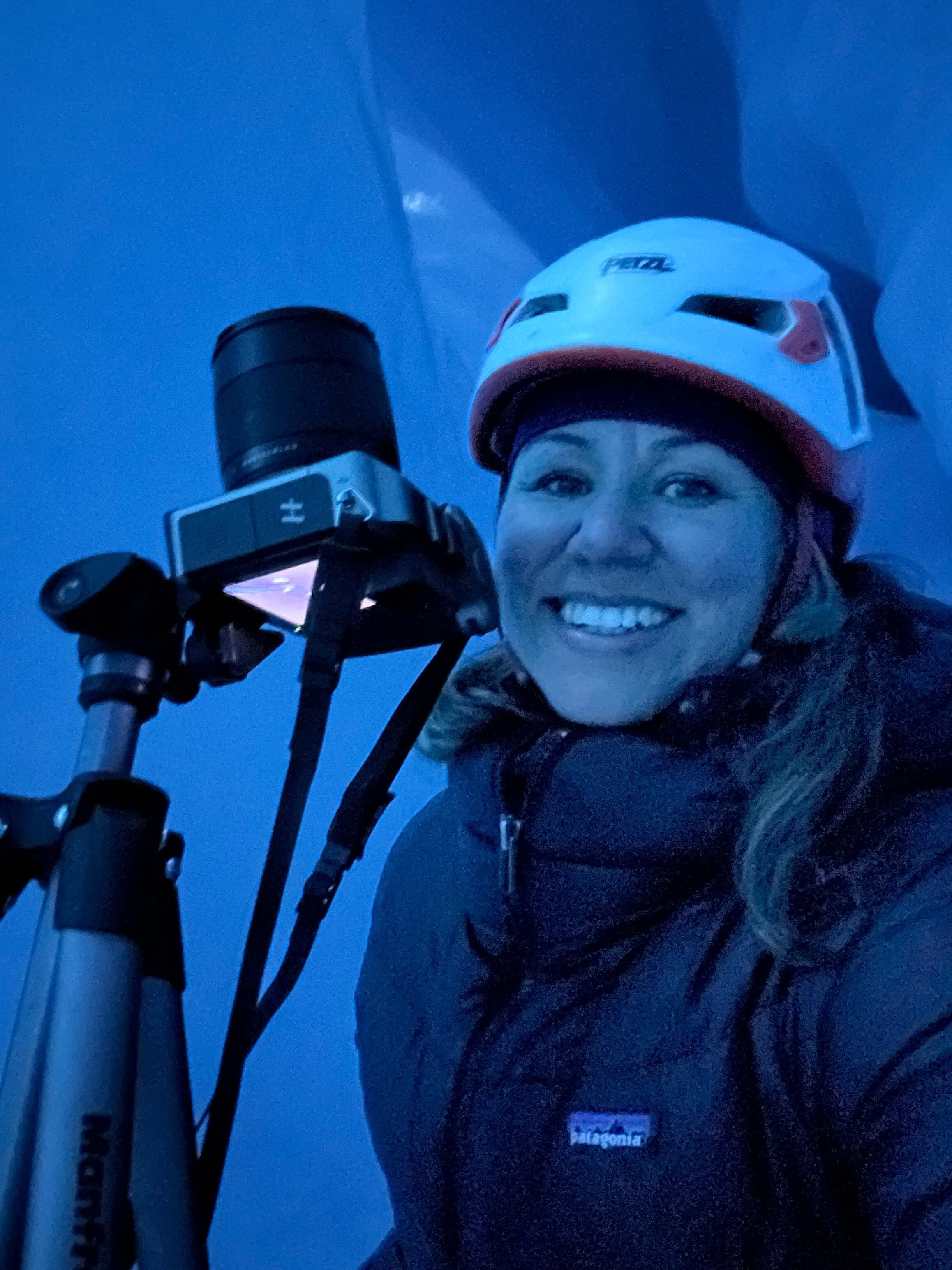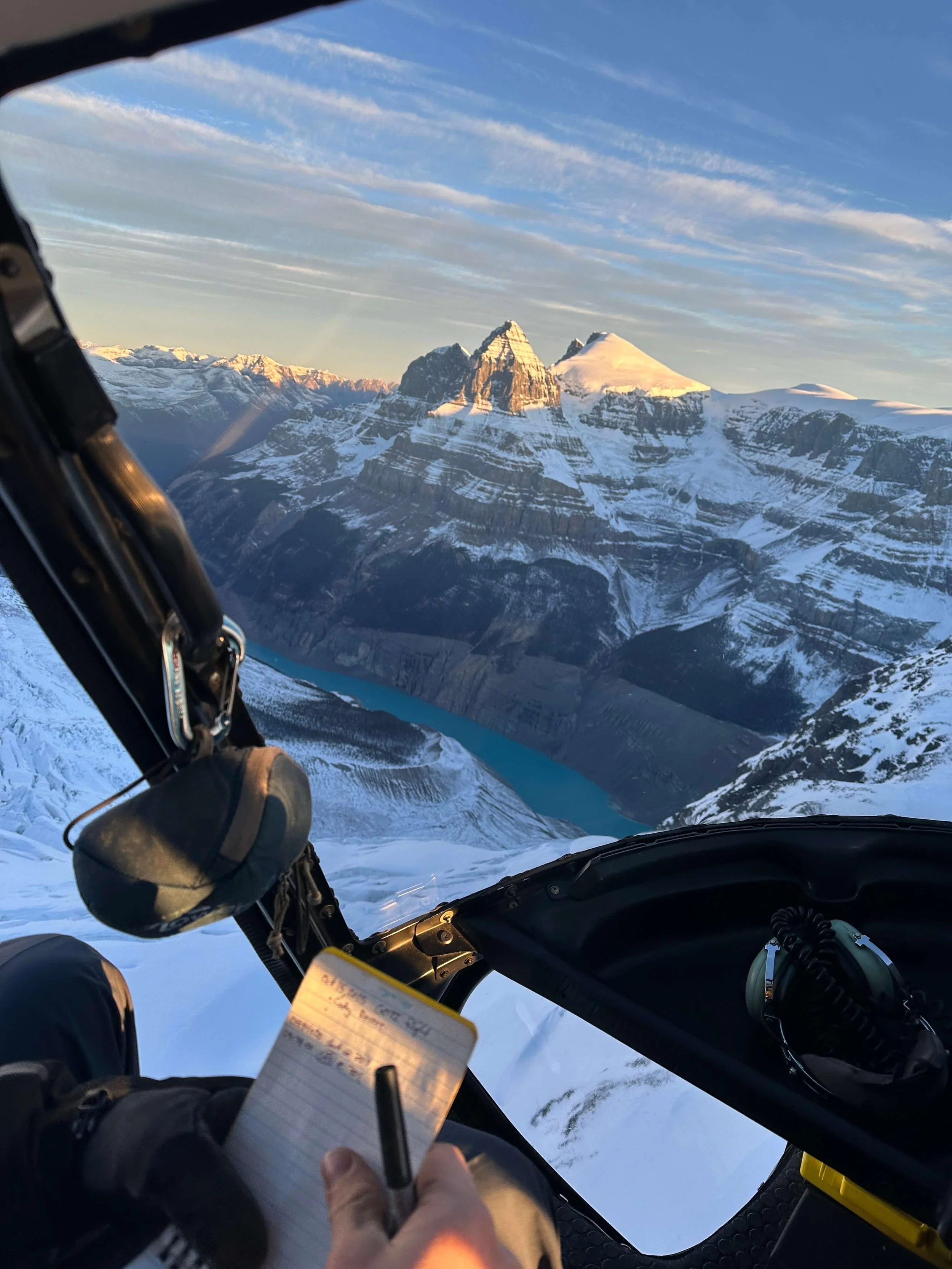Interglacial
Interglacial is a landmark multi-year project developed during my tenure as United Nations Artist-in-Residence for the International Year of Glacier Preservation.
From fieldwork on remote glaciers, to arctic ice-core research, wildfire ecology studies and historic repeat-photography projects, Interglacial transforms scientific research into large-scale artworks that evoke both beauty and urgency. The installations include monumental suspended cyanotype textiles made directly on glaciers, lenticular photographic sculptures derived from Mountain Legacy Project datasets, ephemeral sculptures alluding to atmosphere history and multi-sensory environments shaped by light, sound, and climate data.
At its heart, Interglacial is a call to witness our vanishing cryosphere, to understand glaciers not as distant icons but as lifelines of freshwater, memory, and cultural continuity. By weaving together art, science, and community voices, the exhibition aspires to inspire dialogue, empathy, and action at a moment of planetary change.
Fieldwork 2025
Video: Fieldwork conducted on Place Glacier, BC, in collaboration with Dr. Brian Menounos, September 2025.
Collaborators
Dr. Brian Menounos
Scientific Partner, University of Northern British Columbia
Dr. Menounos is Canada Research Chair in Glacier Change. His research examines the past, present, and future of western Canada’s glaciers, including how meltwater, sediments, and climate shifts shape our landscapes and water security.
Dr. Eric Higgs
Scientific Partner, University of Victoria
Professor of Environmental Studies and founder of the Mountain Legacy Project, Dr. Higgs studies how mountain landscapes are changing and how we can steward them responsibly. His work uses century-old survey images to track ecological transformation across Canada’s peaks.
Dr. Shawn Marshall
Scientific Partner, Environment and Climate Change Canada
A leading climatologist and glaciologist, Dr. Marshall focuses on climate change impacts in western Canada. He previously held the Canada Research Chair in Climate Change and now advises federal policy through Environment and Climate Change Canada
Robert Sandford
Hydrology Advisor, United Nations University
Robert Sandford bridges global climate science with public policy. His work translates research into accessible frameworks that help government and communities understand risk and take informed action on water and climate resilience.
Dr. Lori Daniels
Scientific Partner, University of British Columbia
A leading forest ecologist, Dr. Daniels investigates how climate, wildfire, and human activity drive forest resilience. Her partnerships support real-world conservation and adaptation strategies across British Columbia.
Dr. Jeanine Rhemtulla
Scientific Partner, University of British Columbia
Dr. Rhemtulla studies how to restore multifunctional landscapes that balance ecosystem health, biodiversity, and community needs. Her work bridges ecological science with sustainable land stewardship
Natalie Krizan
Scientific Partner, MSc Researcher, University of Lethbridge
A wildfire researcher studying Jasper National Park, Natalie assesses how changing fire regimes affect montane ecosystems, using lidar and site-based analysis to document shifts in severity and recovery.
Dr. Laura Chasmer
Scientific Partner, University of Lethbridge
Dr. Chasmer uses geospatial and field-based methods to understand how wildfires, permafrost thaw, and land disturbances are reshaping forests and wetlands in Canada’s North.
Dr. Chris Hopkinson
Scientific Partner, University of Lethbridge
An expert in remote sensing of terrestrial ecosystems, Dr. Hopkinson leads research using airborne lidar to map and measure earth surface changes with high precision across mountain and forest environments.









